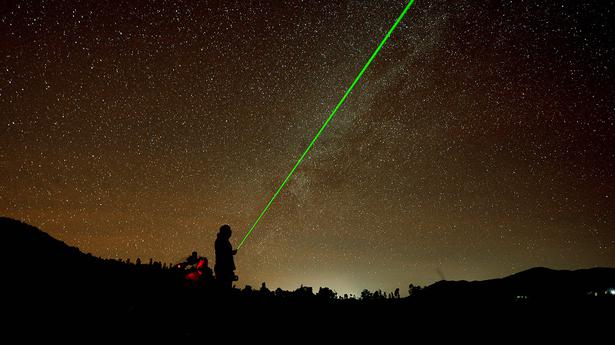
Look up
The Hindu
As Hanle in Ladakh is poised to have India’s first Dark Sky Reserve, prospects for stargazing and astro tourism shine bright
For tourists visiting Ladakh, the itinerary is most likely to include the Pangong Lake in the State’s capital Leh, and for the more adventurous lot, an expedition to the Khardung La pass. What many don’t know is that the region’s arid landscape, sparse population and therefore minimal artificial light also makes it a destination for stargazing. And soon, India will have its first Dark Sky Reserve in Hanle, located about 250 kilometres from Leh. The initiative mooted by the Department of Science and Technology, Ladakh Autonomous Hill Development Council and the Indian Institute of Astrophysics, Bengaluru, is expected to give astro tourism in India a boost.
Globally, designated dark sky regions developed by tourism boards of different countries, in collaboration with astronomers and local communities, are equipped with facilities to aid astro tourism. Since stargazing requires driving to remote locations at night, tourists look for accommodation facilities and this, in turn, can spell revenue for local tourism.
Some of the visitors to Leh might be aware of observatories and homestays that facilitate stargazing experiences. Astro tourism is courted by a niche section of tourists, propelled by astronomy clubs in different cities. A few groups venture into remote locations in Ladakh, Spiti Valley in Himachal Pradesh, and the deserts of Gujarat and Rajasthan to gaze at the clear night skies and spot the stars, nebulae, the Milky Way and other far off galaxies, guided by astronomers.
A designated dark sky region has the potential to bring in domestic and international tourists. The International Dark Sky Association (IDA), in the USA, has so far certified 200 dark sky destinations as part of its International Dark Sky Places (IDSP) program. Following a rigorous application procedure, places are certified as International Dark Sky Sanctuaries, Reserves, Communities or Parks.
Ashley Wilson, IDA’s director of conservation and lead for IDSP, says on an average, IDA certifies around 20 nominations a year. 2021 was an exception with the certification of 37 new places. The 200th place to be certified, in September 2022, was Merritt Reservoir State Recreation Area in Nebraska, USA.
In an email interview, Ashley states that “the IDSP certification brings attention to light pollution and the need to preserve the night sky as a natural resource. Applying for the certification supports management agencies in achieving long-term conservation targets and connecting people to nature. Additionally, it serves as an economic driver by fostering increased tourism and local economic activity.”
He cites examples, as reported by the Colorado Plateau Dark Sky Cooperative: In 2019, a study by Missouri State University examined the economic impact of dark sky tourism on the Colorado Plateau economy. According to the study, astro tourism could lead to $5.8 billion in visitor spending and support the creation of over 11,000 new jobs annually, over the next decade. A report also states that since dark sky observation mostly occurs at night, tourists are likely to prefer overnight stays. On an average, overnight visitors have been found to spend thrice the amount of day-only visitors.

Podcasts have become our best friends, especially during the Covid-19 pandemic. Whether you are cooking, sketching or going on an evening walk, there is a show that matches your mood. From horror tales to informative conversations to just two friends talking about anything & everything relatable, podcasts have become a part of our lives unknowingly. Over the years, more voices have joined this audio landscape and filled it with stories that resonate with our lives. Podcasts serve as a reminder that everyone has a story worth telling and listening to!










